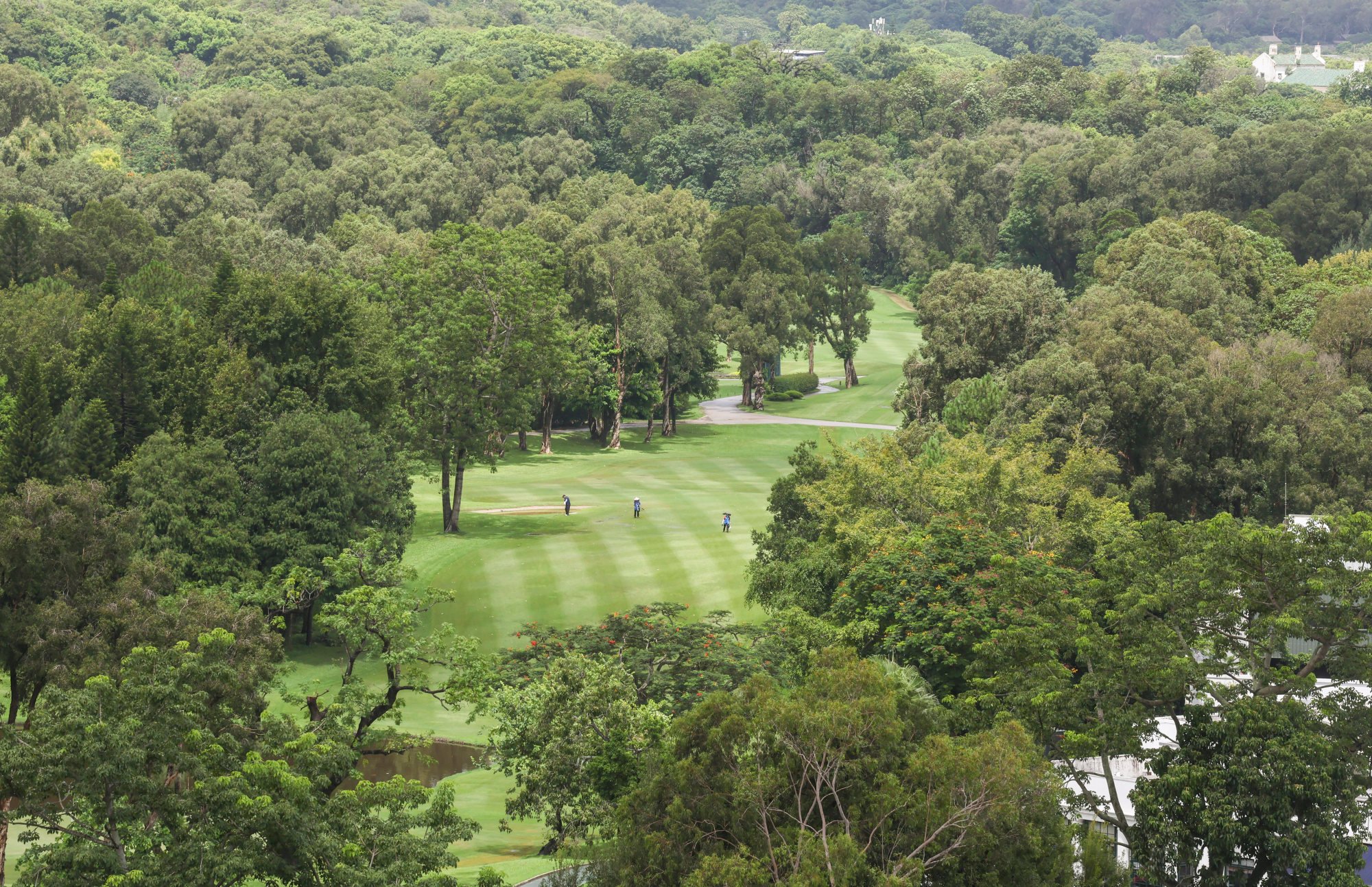
Hong Kong’s Fanling golf course at centre of public housing plan wins Unesco conservation award
- City’s oldest golf course praised for establishing ‘a welcome precedent for conserving a unique typology of landscape heritage’
- Authorities took back 32-hectare portion of course in September, as part of a redevelopment plan to build thousands of public flats
Hong Kong’s oldest golf course, which is at the centre of a controversial redevelopment plan, has picked up a prize at this year’s Unesco Asia-Pacific Awards for Cultural Heritage Conservation, while the operator has said it will not be used as a bargaining chip to preserve the site.
The international agency on Thursday announced the Fanling course had won the Award of Distinction along with two others – the Dongguan Garden Residences in the mainland Chinese city of Yangzhou and Karnikara Mandapam at Kunnamangalam Bhagawati Temple in India’s Kerala state.
“The multidisciplinary effort of the Fanling golf course project has strengthened the socio-ecological commitment and ‘people-nature-culture’ relationship of Greater China’s oldest championship golf course,” the heritage body said.
“[The project establishes] a welcome precedent for conserving a unique typology of landscape heritage, one located amid increasingly urbanised surroundings and subject to larger developmental pressures.”

The jury, composed of seven international conservation experts directed by a chair, reviewed 48 project entries from eight regions across Asia-Pacific this year.
Judges selected 12 winners based on their understanding of place, technical achievements, sustainability and impact, according to Unesco.
Town Planning Board sticks with decision to rezone Hong Kong golf course plot
The course was lauded for creating what Unesco called “a narrative and a range of activities for a wide public, inclusive of golfers and non-golfers alike, and regardless of age and membership standing”.
“The Fanling golf course project thus represents a major advancement in the promotion of an inclusive conservation management approach for cultural landscapes in both Hong Kong and the larger region.”

The site is at the centre of a controversial redevelopment plan, in which authorities in September took back 32 hectares of land from the 172-hectare course leased to the Hong Kong Golf Club. The government plans to build thousands of public housing flats on 9.5 hectares of the taken back land, with the remainder set for conservation and recreational uses.
Seven hectares of the 32-hectare area, on what is known as the Old Course, have been opened to the public since September, with the site also available to the club for use during tournaments.
The club, which has members from among the city’s wealthiest residents, earlier attempted to prevent the section of the Old Course from being used for housing by applying for the Unesco award.
Hong Kong to host LIV Golf League event; club weighs in on use of former course
The move came after it lodged an application for judicial review over the plan in July, citing what it said were mistakes made in the environmental impact assessment report for the development.
Club captain Andy Kwok Wing-leung said the award was “definitely not a bargaining chip” to persuade the authorities to drop the reconstruction plan.
“We will persist in our efforts to collaborate with the government to ensure that this precious land receives the most appropriate arrangements possible,” he said.
Hong Kong court extends suspension for Fanling golf course public housing plan
When asked whether the award would be submitted as a supporting document to the judicial review, Kwok declined to comment.
He said: “This award further validates Hong Kong as a multicultural city and a leading international metropolis in the preservation of cultural heritage.”
But he added he hoped the award would make the Antiquities Advisory Board speed up the review on the overall historic grading of the golf course.
Only several individual structures at the golf course have historic grading at present.

In October, the Town Planning Board decided to support the government’s decision to rezone the 9.5-hectare site from “residential” to “undetermined” as the judicial review was yet to be settled.
The Post has contacted the Development Bureau for comment.
Among the projects recognised by Unesco this year was the urban revitalisation of the Rambagh Gate and Ramparts in India’s Punjab, which won the highest honour, the Award of Excellence.
Five projects were recognised with a merit, including the historical compound of Yan Nan Yuan at Peking University in Beijing, Pan Family Residence in the mainland city of Suzhou, Church of Epiphany in India’s Haryana, David Sassoon Library and Reading Room in Mumbai and Bikaner House in New Delhi.
Part of Hong Kong’s Fanling golf course to open to public after government takeover
The award for New Design in Heritage Contexts went to the Erlitou Site Museum of the Xia Capital in the mainland city of Luoyang.
India’s Karnikara Mandapam prayer hall and Pipal Haveli multi-use educational building, and Nepal’s Sikami Chhen house were awarded with a special recognition for sustainable development.
Every year since 2000, the Unesco Asia-Pacific Awards for Cultural Heritage Conservation have recognised the efforts of private individuals and organisations in restoring, conserving and transforming structures and buildings of heritage value in the region.
The winners were selected according to conservation criteria including articulation of the spirit of place, technical achievement, appropriate use or adaptation, engagement with local community and contribution to enhancing the sustainability of the surrounding environment and beyond.


